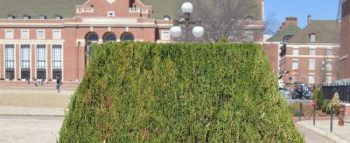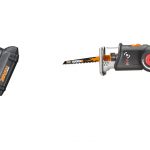When it comes to managing hedges there are two common methods that can be used: shearing and pruning. Each technique is used to achieve different goals and requires a different set of tools. Let’s get an understanding of the two techniques then look at which type of pruning equipment to use.
1. Pruning versus Shearing
The two methods used to shape and manage plant growth utilize different cutting techniques and result in hedges with vastly different forms. Select an approach that matches your vision for the final product. Do you want a uniform, shaped hedgerow or do you enjoy more natural, free-flowing hedges?
Pruning
Pruning is the removal of selected branches or plant parts. Hedges are pruned to control plant size and remove unwanted branches while maintaining a natural shape.
Shearing
Shearing is the uniform removal of all or part of the latest flush of plant growth. Plants are sheared to maintain a specified size or shape and produce dense, compact hedgerows.
2. Use the Right Equipment
Knowing the right tool to use makes any job a whole lot easier. Proper selection of pruning equipment depends both on the type of pruning you will perform and the size of the plant material being cut. Often. More than one tool is required to complete the task.
Pruned Hedges
Hand Pruners: Designed for small jobs; cut stems up to ¾” in diameter
Loppers: Longer handles for greater leverage and reach; cut branches up to 1 ¾” in diameter
Pruning Saw: Curved blade and coarse teeth; cut branches larger than 1 ¾” in diameter
Sheared Hedges
Hand-Powered Shears: Long, flat blades; clip foliage and branch tips; shape grasses or shrubs
Electric Shears: Short, cutting blades; trim grasses and shrub tips; good for detailed work 3.6V Cordless Shrubber Shear
Hedge Trimmers: Long cutting blades; uniform cut over large surfaces; the garden workhorse 20V Cordless 20″ Hedge Trimmer
3. Making the Cut
Now that you know which technique and tools to use it is time to get to work. Most shrubs are pruned in the late winter or early spring before the first flush of new growth. Vigorous shrubs in formal hedges may need additional shaping during the growing season. It is important to note all spring-flowering shrubs should be pruned after they complete blooming, otherwise the flower buds will be removed with the clippings.
Hedge Pruning Tips
- Envision the natural shape and selectively cut back out-of-place branches.
- Work slowly – step back from the plant frequently to look at the overall shape.
- Cut stems back to a lateral branch within the plant canopy to hide the stub.
- Natural Hedges require little pruning beyond general maintenance.
Hedge Shearing Tips
- Begin shaping hedges when plants are small.
- Young hedges may require shearing after each new flush of growth to encourage branching.
- To prevent shading, shape hedges so they are wider at the base than the top.
- Hold trimmer blades parallel to the hedge for straight cuts.
Work from the bottom of the hedge upwards to direct falling foliage away from the plant.
Shop the collection of lightweight and easy-to-use cordless and electric hedge trimmers at worx.com




